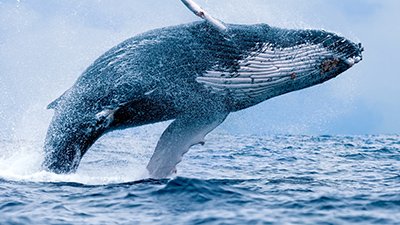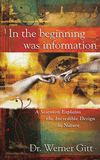
Mutant Mice and their Super Powers
How mighty mutant mice got their super-powers
News Source
- LiveScience: “Freaky Mutant Mouse Steals Genes to Resist Poison”
Homeowners and farmers in Germany and Spain are losing the battle against the European house mouse. Poison-resistance is on the rise, and researchers reporting in Current Biology have found out why. The house mouse genome is receiving some unexpected foreign aid from Algerian mice.
These mice are different species, and no one thought they could successfully interbreed. “We are looking at two species that are 1.5 million to 3 million years removed,” Rice University biologist Michael Kohn says. The two species do coexist in Africa and Europe, but when they interbreed, all of the male hybrids and many of the females are sterile. Yet “that narrow window of a few fertile females must have been enough to leak DNA,” Kohn adds.1 The hybrid genome contains “a chunk of [Algerian] DNA that includes the resistance.” And now these rather robust fertile hybrids are getting to be a real problem.
Viewing this successful hybridization as a new and unexpected type of evolution, Kohn says, “For animals, we did not know that there seems to be another pathway how [sic] you can evolve, by adopting a gene from another species and incorporating it into your own DNA. . . . In microbes it’s quite well understood . . . but I don’t think anyone could have thought this type of thing could happen in animals.” He adds, “They are a little bit further apart than humans and chimps. That’s not a trivial amount in terms of breeding.”
The rodenticide warfarin, introduced in the 1950s, works by disabling the protein vkorc1. That protein is required to activate vitamin K. Without vitamin K, the rodent’s blood cannot clot and it soon dies. By 1964, warfarin resistance was appearing. A point-mutation on the gene which codes for the warfarin target area on vkorc1 can produce this resistance. Survivors are able to reproduce and pass this mutation on.
Algerian mice are generally warfarin resistant. They are thought to have had a vitamin K-deficient diet. If that was the case, those with the genetic ability to survive now possess and pass on the necessary “work around” to avoid warfarin death. Kohn’s group has discovered that the resistance in Algerian mice is provided by “adaptive protein evolution of vkorc1 . . . resulting in radical amino acid substitutions that apparently cause anticoagulant tolerance” along with other effects.2 The Algerian mice were able to adapt to a vitamin K deficient diet because they possessed the genetic information to do so.
The researchers were shocked that these two mouse species could successfully hybridize because they believed that millions of years of separation should have allowed sufficient genetic differences to accumulate to prevent successful crossing.
The researchers were shocked that these two mouse species could successfully hybridize because they believed that millions of years of separation should have allowed sufficient genetic differences to accumulate to prevent successful crossing. As creationists, we are not quite so shocked, since we would expect these two species to be part of the same created kind. Thus after their ancestors emerged from Noah’s ark, multiplied, and spread abroad, only a few thousand years of segregation could have occurred. The genetic differences accumulated were not sufficient to make interbreeding completely impossible.
Kohn considers these mice to be even more different than chimps and humans. Yet the so-called similarity between chimp and human genomes is an example of impressive-sounding numbers describing a not-so-impressive reality. Biases in the methodology used to compare the genomes makes the similarity appear greater than it truly is. Furthermore, even if there really were a 99% similarity as some claim, there would still be a difference of at least 3 million base pairs. Read about more differences in “Are Humans and Chimps Related?” and “If Human and Chimp DNA Are So Similar, Why Are There So Many Physical and Mental Differences Between Them?”
In the case of European and Algerian mice, however, the similarities are evidently greater than suspected, as evidenced by their successful hybridization. Natural selection favoring warfarin resistant hybrids and their successful procreation have produced a formidable rodent adversary. But no evolution of the sort required for molecules-to-man evolution has occurred. The hybridization provided the house mouse with new information, but it was new mouse information. The mice are still mice, just mightier than before.
Further Reading
For More Information: Get Answers
Remember, if you see a news story that might merit some attention, let us know about it! (Note: if the story originates from the Associated Press, FOX News, MSNBC, the New York Times, or another major national media outlet, we will most likely have already heard about it.) And thanks to all of our readers who have submitted great news tips to us. If you didn’t catch all the latest News to Know, why not take a look to see what you’ve missed?
(Please note that links will take you directly to the source. Answers in Genesis is not responsible for content on the websites to which we refer. For more information, please see our Privacy Policy.)
Footnotes
- Kai Kupferschmidt, “‘Bastard’ Mouse Steals Poison-Resistance Gene,” Science, July 21, 2011, http://www.sciencemag.org/news/2011/07/bastard-mouse-steals-poison-resistance-gene.
- Ying Song et al., “Adaptive Introgression of Anticoagulant Rodent Poison Resistance by Hybridization between Old World Mice,” Current Biology 21, no. 15 (August 9, 2011): 1296–1301, doi:10.1016/j.cub.2011.06.043.
Recommended Resources

Answers in Genesis is an apologetics ministry, dedicated to helping Christians defend their faith and proclaim the good news of Jesus Christ.
- Customer Service 800.778.3390
- Available Monday–Friday | 9 AM–5 PM ET
- © 2025 Answers in Genesis




